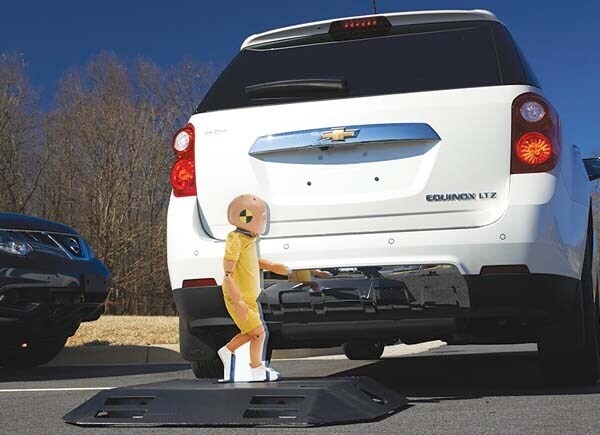The latest research by the Insurance Institute for Highway Safety has found that rearview cameras are more effective than basic parking sensors at helping avoid impacts when a vehicle is traveling in reverse. However, despite their superiority, the IIHS found that even the cameras are not capable of preventing all incidents. Accidents that occur when backing up kill an estimated 292 people annually and cause an additional 18,000 injuries. Last September, the National Highway Traffic Safety Administration (NHTSA) submitted new rules to the administration that would make backup cameras mandatory in all new vehicles sold in the U.S.
To help prevent bias, the 111 volunteer participants in this study initially were told they would be evaluating the infotainment systems in the test vehicle, which was a 2013 Chevrolet Equinox SUV. IIHS selected the Equinox because of its popularity and the fact that it has neither the largest or smallest "blind" zones. Some were equipped with just sensors, some with cameras, some with both devices and some with neither. After completing various assigned tasks in a large parking lot, the drivers were told to back out of a spot and return to where their personal cars were parked. At that point, the test team placed a foam cutout of a child-size crash dummy behind the test vehicle. In some instances it was stationary and in some it was pulled into the line of travel from the driver’s side.
Also: 12 Best Family Cars of 2014
The results were enlightening, although not always what might have been expected. While all of the drivers in vehicles with no technology struck the dummy, that number only dropped to 94 percent for vehicles with sensors versus a still surprisingly high 56.3 percent on those with rearview cameras. Oddly enough, drivers in vehicles fitted with both of these safety aids hit the dummy 75 percent of the time. As to why, the IIHS postulates the sensors may have provided a false sense of security that caused drivers not to look at the camera display as frequently. Regardless of the technology present, backing impacts occurred in a 4:1 ratio when the dummy was static versus when it was in motion.
"Right now cameras appear to be the most promising technology for addressing this particularly tragic type of crash, which frequently claims the lives of young children in the driveways of their own homes," says David Zuby, the Institute’s executive vice president and chief research officer.
David Kidd, an IIHS research scientist and the lead author of this and a previous related study, added that improving sensor technology to give them extended range would also be of value in helping provide earlier warning. "Even when drivers braked in response to the sensor, few collisions were prevented."
While the organization believes that enhancements in camera design to upgrade their low-light/shade capabilities also would yield better results, it feels that combining these two existing systems with rear automatic braking would provide an even more effective solution to the problem.
More Safety Technology…
Cadillac’s Super Cruise technology has now started real-world testing
Mercedes-Benz has introduced a new anti-wrong-way-driver warning system
2014 Volvos offer a new cyclist-detection safety system
Popular at KBB.com
10 Best Sedans Under $25,000
12 Compact Cars for 2014
10 Best Luxury Cars Under $40,000












